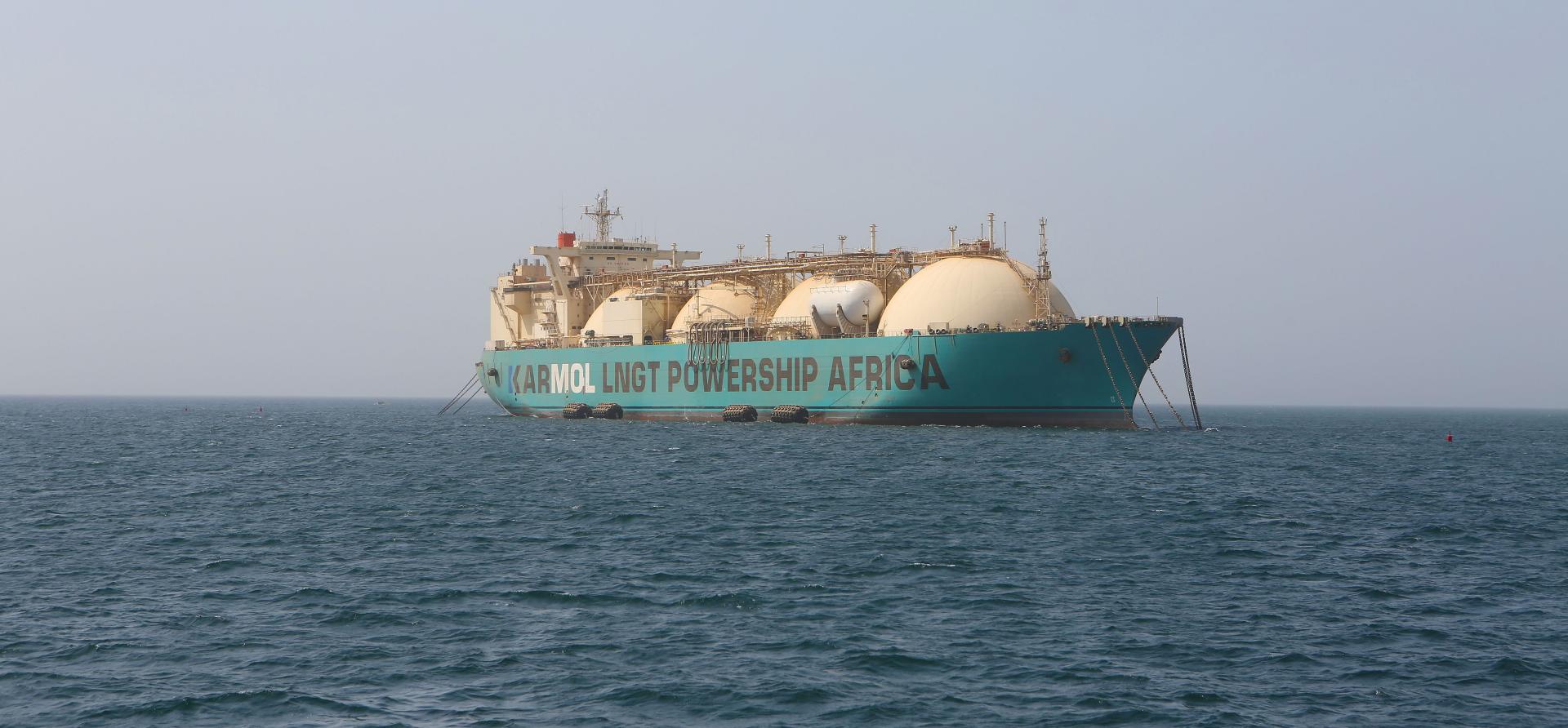African LNG projects threatened by a global wave of new capacity

Key Findings
Findings from IEEFA's Global LNG Outlook 2024-2028 have raised questions about the risks and benefits of long-delayed liquefied natural gas (LNG) projects in Africa.
With a number of planned African LNG projects already facing delays and uncertainty, the report shows that lethargic demand growth combined with a huge wave of new export capacity will send global LNG markets into oversupply within two years.
As the impending global LNG glut takes shape, prices are likely to fall, constraining the fiscal benefits that African nations would see from LNG projects.
This analysis is for information and educational purposes only and is not intended to be read as investment advice. Please click here to read our full disclaimer.
A new report examining the global prospects for the liquefied natural gas (LNG) over the coming years raises further questions about the risks and benefits of long-delayed LNG projects in Africa.
Lethargic demand growth combined with a huge wave of new export capacity will send global LNG markets into oversupply within two years, according to the latest Global LNG Outlook 2024-2028 from the Institute for Energy Economics and Financial Analysis (IEEFA).
From late 2024, an unprecedented surge of new liquefaction projects will start coming online. IEEFA forecasts global LNG production capacity will grow by around 193 million tonnes per annum (Mtpa) from 2024 through 2028. This amounts to a 40% increase in capacity in five years – the fastest capacity growth in the global LNG industry’s brief history.
By the end of 2028, total global liquefaction capacity could reach 666.5Mtpa. To put that in perspective, the International Energy Agency (IEA) sees total LNG trade in 2050 of 482Mtpa under its Stated Policies Scenario. The U.S. and Qatar will account for the largest share of new supply.
A much smaller amount, totalling almost 14 Mtpa, will come online in Africa, specifically in the Republic of Congo, Mauritania, Senegal, Nigeria and Gabon. Ongoing delays mean major LNG projects planned for Mozambique and Tanzania will not be online before the end of 2028, if they proceed at all.
Lacklustre demand
The very high LNG prices that followed Russia’s invasion of Ukraine helped spur huge investment in new supply. However, they also convinced markets to shift away from reliance on the fossil fuel and to reduce its role in long-term development plans.
As a result, global LNG demand may not grow quickly enough to absorb new supply.
IEEFA expects that LNG demand in Europe, Japan and South Korea – which together account for more than half of global LNG imports – will fall through 2030.
China reclaimed its position as the world’s largest LNG importer in 2023. However, an unprecedented rollout of renewables, combined with rising domestic gas production and pipeline imports, may limit Chinese LNG demand growth. Meanwhile, emerging economies face economic, financial and logistical challenges that could constrain LNG uptake.
More questions for delayed African projects
TotalEnergies is hoping to restart its US$20 billion, 13Mtpa Mozambique LNG project in 2024 after it declared force majeure in 2021 in the wake of insurgent attacks in the northern Cabo Delgado province where it is based. The project’s financiers – who together agreed to provide US$15 billion before the project was halted – are now assessing whether to reaffirm their support.
TotalEnergies had at one point intended to start production this year and now aims for a restart as the company also faces delays at its Uganda oil project. The risk of further delay remains – insurgent attacks intensified in Cabo Delgado earlier this year.
ExxonMobil is also hoping to restart development of its US$30 billion, 18Mtpa Rovuma LNG project in the same province, targeting a final investment decision in 2025.
Meanwhile, there are continuing delays at a proposed US$42 billion LNG project in Tanzania, and developers Shell and Equinor have warned that the project has limited time to get up and running before fossil fuel demand starts dropping.
All these delays mean that when or if these projects come online, it will be after the wave of new global supply has pushed the global market into oversupply. They would also start operations much further into the energy transition away from fossil fuels than intended, severely clouding their outlook and undermining any benefits for Mozambique and Tanzania.
In West Africa, BP’s 2.5Mtpa Greater Tortue Ahmeyim floating LNG project off Mauritania and Senegal is currently aiming for completion this year, following a series of delays.
However, BP has exited the Yakaar-Teranga gas field, of which it was the operator with a 60% stake. BP wanted to export the gas while the Senegal government wanted to prioritise domestic use.
This highlights a further risk for Africa nations hosting such projects. International oil companies target extraction and export, not the provision of gas to local populations.
It seems unlikely that planned LNG projects will improve energy access in northern Mozambique. A 75-megawatt (MW) gas-fired power plant proposed for Cabo Delgado province in 2013 seems to have come to nothing. Plans to use some of the gas production for a gas-to-liquids plant developed by Shell and for fertilizer and power plants built by Yara International have been cancelled.
The International Institute for Sustainable Development warned in December 2023 that a lack of local involvement in the full LNG value chain meant that “multinational companies involved in the LNG projects make money at all these stages, but the financial benefit to Mozambique is limited to what the state receives from the projects through production royalties, corporate taxes, and profit sharing.”
IEEFA’s new Global LNG Outlook highlights the growing risks to these diminishing benefits.
As the impending global LNG glut takes shape, prices are likely to fall, further constraining the fiscal benefits that African nations would see from LNG projects. This raises a critical question: are they worth pursuing at all?
This article was first published in Business Day.
















